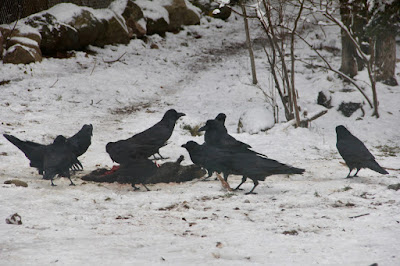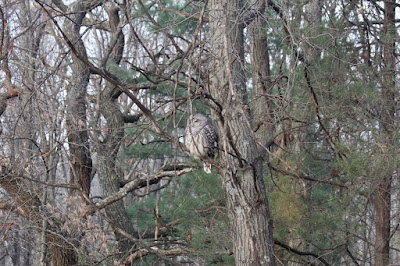Long, long ago (2010), in a country far, far away, it came about that
"The U.S. Environmental Protection Agency (EPA) defines sustainability as
the satisfaction of basic economic, social, and security needs now and in the future without undermining the natural resource base and environmental quality on which life depends. From a business perspective, the goal of sustainability is to increase long-term shareholder and social value, while decreasing industry’s use of materials and reducing negative impacts on the environment.4"
"4 U.S. EPA, Sustainability, Basic Information, http://www.epa.gov/sustainability/ basicinfo.htm#sustainability (last visited Apr. 2, 2010)."
We learned this from a paper by Jane Kloeckner titled
Developing a Sustainable Hardrock Mining and Mineral Processing Industry: Environmental and Natural Resource Law for Twenty-First Century People, Prosperity, and the Planet. If it's not clear yet, we're strongly in favor of people, prosperity and the planet, but without the latter, the first two don't do very well. In fact, although we reserve the right to revise our opinion at some future time, we prefer the cited EPA definition to that of the oft quoted
Brundtland Commission [p. 41]:
"Sustainable development is development that meets the needs of the present without
compromising the ability of future generations to meet their own needs. It contains within it
two key concepts:
- the concept of 'needs', in particular the essential needs of the world's poor, to which
overriding priority should be given; and
- the idea of limitations imposed by the state of technology and social organization on the
environment's ability to meet present and future needs."
All of the preceding has been triggered by our continuing and growing interest in the possibility of helping Minnesota become a world leader in sustainable mining. [We'll pause here so you can either recover and catch your breath or finish laughing uproariously.] Canada, our friend and competitor to the North, has been working for some time on an approach called
Toward Sustainable Mining. We like to believe that the "Toward" may be in recognition that an extractive industry may not ever get to be truly sustainable. Perhaps not, but we can certainly do better in Minnesota in increasing long-term shareholder and social value while we further reduce negative impacts on the environment. (See why we like the EPA definition?)
 |
Duluth harbor, steel hulls and taconite pellets
|
Even the steel industry itself is getting into the "
sustainability business." Unfortunately, they seem to have missed the significance of the early parts of their supply chain, the entire mining sector. Fortunately, others are busy helping the industry focus on such concerns and offering strategic guidance. For example, from "
Steel Available ... a data-driven supplier relationship management and sourcing platform that connects buyers and suppliers while ensuring compliance and visibility in the heavy industry." we learn:
"Often required by different sustainability advocates nowadays, companies
need to adopt ‘ethical sourcing practice’. Therefore, they have to
select suppliers with high economic, social, and environmental value and
work with them. Recall a principle from operations management: a stable
partnership with only a few suppliers is usually more favourable. Along
the process of selection, suppliers with similar values and operation
systems can be relied on and even grow together in the long term. This
pushes for mutual reliance of supplier and buyer, achieving a better
power balance in the buying process as well."
While the world is changing around us, some folks are pursuing what seems to be a least cost commodity tactic for Minnesota's mining industry, reducing or eliminating or not enforcing environmental requirements. It doesn't have to be like that. For example, did you know that "Today, DNR is the largest single FSC-certified land manager in the U.S." (Forest certification is a voluntary third-party process that identifies and recognizes well-managed forest land. It takes into consideration the ecological, economic, and social components of forests and surrounding communities.)
 |
solar panels on a northern Minnesota farm
|
We now live in a world where engagement rings need to hold blood-free diamonds in fair trade gold settings. Next thing we know, companies like Ford (you can buy any color you want as long as it's black) will have lots that look like rainbows and will be advertising fair trade steel in their EVs. Take a look at their
sustainable materials strategy.
Wouldn't you think Minnesota would want a piece of that kind of action? To get it, we'll need healthy communities in a healthy environment with mines that meet stringent requirements, won't we? Or else Chinese steel from Canadian ore might be a more sustainable source, because Minnesota failed to value and use its assets to increase shareholder and social value. We have most of the necessary tools, but that's a posting for another day or two (or three).
Prayers of Steel
Lay me on an anvil, O God.
Beat me and hammer me into a crowbar.
Let me pry loose old walls.
Let me lift and loosen old foundations.
Lay me on an anvil, O God.
Beat me and hammer me into a steel spike.
Drive me into the girders that hold a skyscraper together.
Take red-hot rivets and fasten me into the central girders.
Let me be the great nail holding a skyscraper through blue nights into white stars.
********************************************
Thanks for visiting. Come again when you can.
Please be
kind
to each other while you can.
























